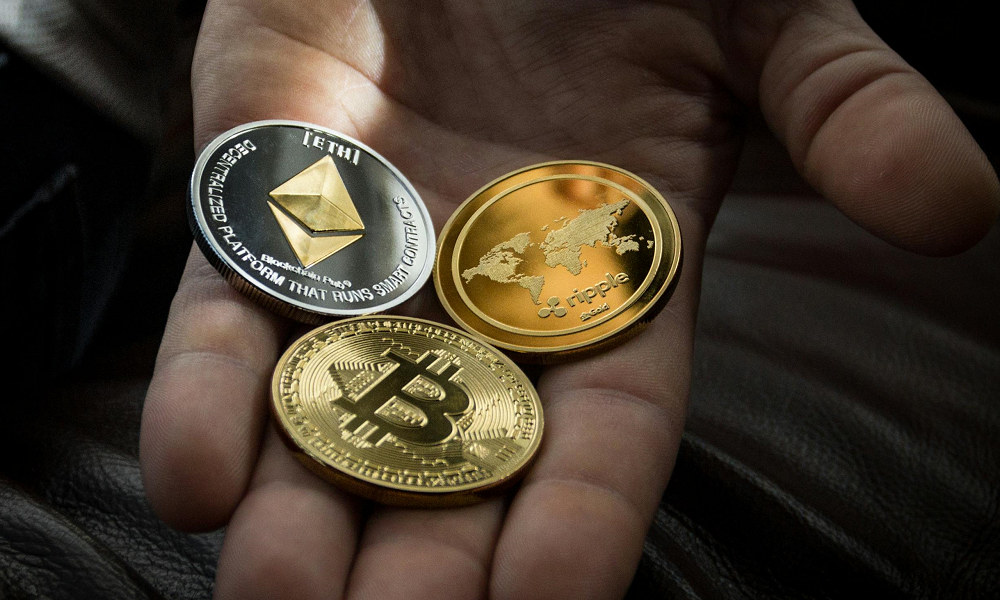Reviews
Should You Swap or Hold? Rebalancing for Steady, Low-Volatility Growth

Rebalancing keeps risk in check so your money grows steadily without surprise swings.
Ever open Coinbase and see Bitcoin suddenly make up 25% of your savings? That drift adds risk you didn’t plan for. Rebalancing brings you back to your target mix—say 85% cash/bonds, 10% stocks, 5% crypto—so one asset doesn’t dominate.
Data backs it up: Vanguard and Morningstar found that annual or 5%-band rebalancing keeps portfolios stable, cutting volatility by up to 30% without reducing long-term returns.
In crypto, small is smart. Many investors limit BTC/ETH to 1–5% of their portfolio. A 60/40 mix drifting to 70/30 after a surge can face 20% deeper drawdowns if left unchecked.
If you want to stay in crypto but reduce volatility, consider shifting into lower-fee networks. For example, some traders exchange USDT to Litecoin to keep funds liquid and easy to move between exchanges without high gas costs. Litecoin’s speed and reliability make it a practical rebalancing tool.
Freedom means choice, not FOMO. Set clear targets, use trusted platforms, review fees, and avoid chasing trends.
Quick safety checklist:
- Set targets and a rule (annual or 5% bands)
- Use trusted platforms (Fidelity, Vanguard, Schwab, Coinbase)
- Keep crypto under a defined cap
- Review fees and taxes before each trade
- Automate alerts; avoid reacting to TikTok “alpha”
When to Hold vs. When to Swap
Hold when your plan hasn’t changed; swap only to reduce risk, cut costs, or rebalance back to target.
- Hold:
- Core positions like Bitcoin and Ethereum you’ve sized modestly (e.g., 60% stablecoins, 30% BTC/ETH, 10% “experiments”). Discipline beats constant tinkering.
- When fees eat gains. On Ethereum mainnet, a swap can cost $5–$25; on Base or Arbitrum it’s ~$0.05–$0.50. Why trade like you’re skipping Netflix intro scenes?
- During noise. BTC’s annualized volatility ~60%; daily moves ±3% happen. Not a “must-swap” signal.
- Swap:
- Rebalance drift >5%. If BTC runs and your 30% target becomes 36%, trim to lock gains. Independence is choosing your risk, not chasing charts.
- Move into safer rails. Rotating from volatile coins to USDC or Tether (USDT) during life events (home down payment soon?) protects cash needs.
- Lower counterparty risk. Prefer USDC at regulated venues (Coinbase, Kraken). Stablecoin market cap ~ $160B; pick audited reserves with monthly attestations.
- Reduce fees. Shift activity to L2s (Base, Arbitrum) before recurring swaps.
Rhetorical gut-checks:
- Would you swap your emergency fund because of a TikTok? Probably not.
- Will this trade matter in 5 years, or just today’s dopamine?
Quick safety checklist:
- Verify contract and token (CoinGecko green check).
- Confirm network and gas before swapping.
- Use 2FA, allowlist withdrawals.
- Test with $5 first.
Safe Rebalancing Methods and Schedules
Keep rebalancing boring: use a fixed schedule and clear thresholds so emotions never drive trades.
- Method 1: Calendar-based. Rebalance quarterly (Jan 1, Apr 1, Jul 1, Oct 1). Simple, predictable, less screen time.
- Method 2: Threshold-based. Only rebalance when an asset drifts 5–10% from target. Example: target 80% cash/T‑bills, 15% BTC/ETH, 5% USDC; if BTC jumps from 10% to 17% (7% drift), trim back.
- Method 3: Hybrid. Check monthly, act only if 5–10% bands break. Fewer trades, fewer fees.
Why does this matters? Bitcoin’s annualized volatility has hovered around 60–80%; a 5% band can cap drift without constant tinkering. Fees and spreads compound: many exchanges charge 0.1–1.5% plus 0.2–1.0% spread. Fewer, larger rebalances usually cost less.
Step-by-step (verified tools):
- Pick a safe hub: Coinbase or Gemini (regulated in the U.S.), or Kraken. Cold storage: Ledger or Trezor.
- Park your “sleep-well” cash in 3–6 months of expenses; consider T‑bill ladders (yields ~4–5% recently).
- Stable, clean collateral: USDC (Circle) holds monthly attestations; avoid unknown stablecoins.
- Schedule: add calendar reminders like Netflix renewals. No FOMO buys after TikTok pumps.
- Log trades; track cost basis (CoinTracker, Koinly). U.S. note: crypto isn’t under wash-sale rules as of 2024, but laws can change.
Safety checklist:
- Two-factor authentication and hardware keys (YubiKey).
- No API trading to third-party apps you don’t trust (Shrimpy, 3Commas—use read-only at most).
- Avoid weekend rebalances when spreads widen.
- Small test trade first. Then the rest.
- ESG angle: prefer proof‑of‑stake (ETH uses ~99.95% less energy than PoW); keep BTC allocation modest if sustainability matters.
Skeptical? Good. Rebalancing is about independence from hype, like choosing “Skip Ad” every time.
Risk Controls and Safety Checklists
Protect principal first; returns come second.
Safety checklist for slow, steady savers:
- Cap crypto exposure at 1–5% of your net worth; rebalance quarterly. Freedom is sleeping well.
- Use regulated, liquid venues: Coinbase, Kraken, Bitstamp. Verify Proof-of-Reserves (Kraken publishes Merkle-tree PoR; Coinbase files audited 10-Ks).
- Turn on hardware security keys (YubiKey) or app-based 2FA. Google data: strong 2FA blocks 100% automated bots, ~96% bulk phishing, ~76% targeted attacks.
- Custody split: hot wallet for spending, hardware wallet (Ledger, Trezor) for savings. Back up seed phrase offline; consider metal plates and Shamir backup.
- Stablecoin risk controls: diversify across issuers (USDC by Circle, PYUSD by PayPal/Paxos). Check monthly attestations and reserve breakdowns; avoid 20% APY “too good” offers.
- Smart-contract caution: prefer assets audited by Trail of Bits/OpenZeppelin; avoid unaudited DeFi. Ask: Would you click a TikTok link promising 20% APY?
- Withdrawal drills: move $10 test transactions. If Netflix or your bank app was down, could you still move funds?
- Insurance is limited: FDIC doesn’t cover crypto; some custodians (BitGo, Fireblocks) carry crime insurance—market losses not covered.
- Energy note: prefer proof-of-stake chains; Ethereum cut energy use ~99.95% post-Merge.
- Scam filter: no support-DMs, no seed sharing, verify URLs, wait 24 hours before large moves.
Tools, Platforms, and Simple Tracking Tables
Use a small, regulated toolkit and one simple table; that’s how you stay safe, steady, and in control.
Core tools (pick 1 per row):
- Buy/sell: Coinbase (public, NASDAQ: COIN), Kraken (proof‑of‑reserves). Typical fees: 0–1.5% ACH; instant buys higher.
- Hold: Ledger or Trezor hardware wallet; USDC (issued by Circle) for cash‑like holdings.
- Yield-lite, T‑bill backed: Franklin OnChain U.S. Government Money Fund (BENJI app; FOBXX, 7‑day yield ~5.0–5.3% in 2024), BlackRock BUIDL (qualified investors).
- Tracking: CoinLedger or a spreadsheet; price feeds via CoinGecko.
Quick setup (10 minutes):
- Create exchange account, enable 2FA (app, not SMS). Google found app‑based 2FA blocks 99%+ automated takeovers.
- Withdraw to hardware wallet; set withdrawal allowlist.
- Log entries weekly. Like your Netflix “Continue Watching,” don’t let it pile up.
Honest risks:
- Smart‑contract/custody failures; 2023–2024 crypto hacks ≈ $1.7–$2.0B annually (Chainalysis).
- Stablecoins can depeg; keep emergency cash off‑chain too.
Freedom angle:
- You choose fees, custody, and timing—no bank hours. Ethereum now uses ~99.95% less energy post‑Merge (PoS).

-

 Legal2 days ago
Legal2 days agoMichigan man JD Vance sentenced to 2 years for threatening Trump and JD Vance
-

 Politics3 days ago
Politics3 days agoU.S. to designate Maduro-linked Cartel de los Soles as terrorist organization
-

 World6 days ago
World6 days agoU.S. begins Operation Southern Spear against “narco-terrorists” in the Western Hemisphere
-

 Health3 days ago
Health3 days agoCambodia reports fatal H5N1 bird flu case in 22-year-old man
-

 Legal6 days ago
Legal6 days agoImprovised explosive device detonates outside Las Vegas restaurant; no injuries
-

 World1 week ago
World1 week agoNationwide power outage hits Dominican Republic
-

 Politics3 days ago
Politics3 days agoEpstein survivors release PSA calling on Congress to release all files
-

 Legal5 hours ago
Legal5 hours agoWoman in critical condition after being set on fire on Chicago train




